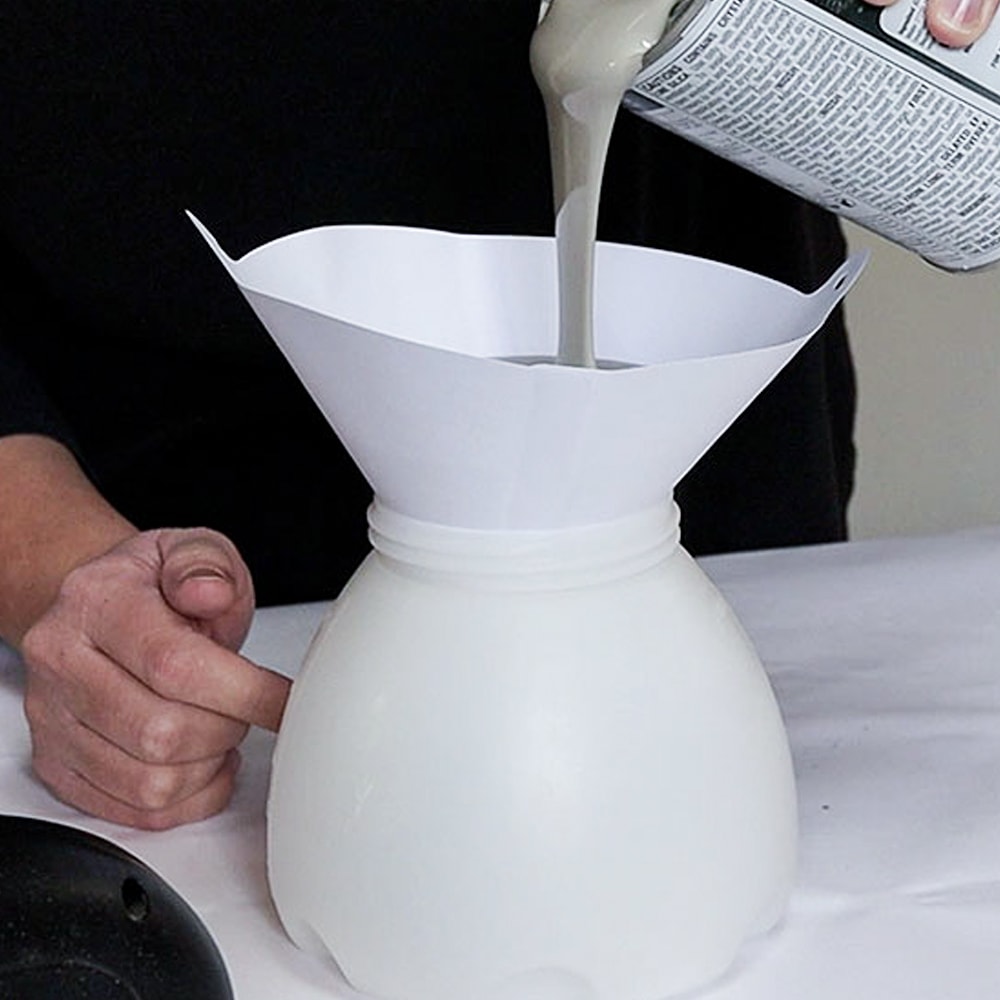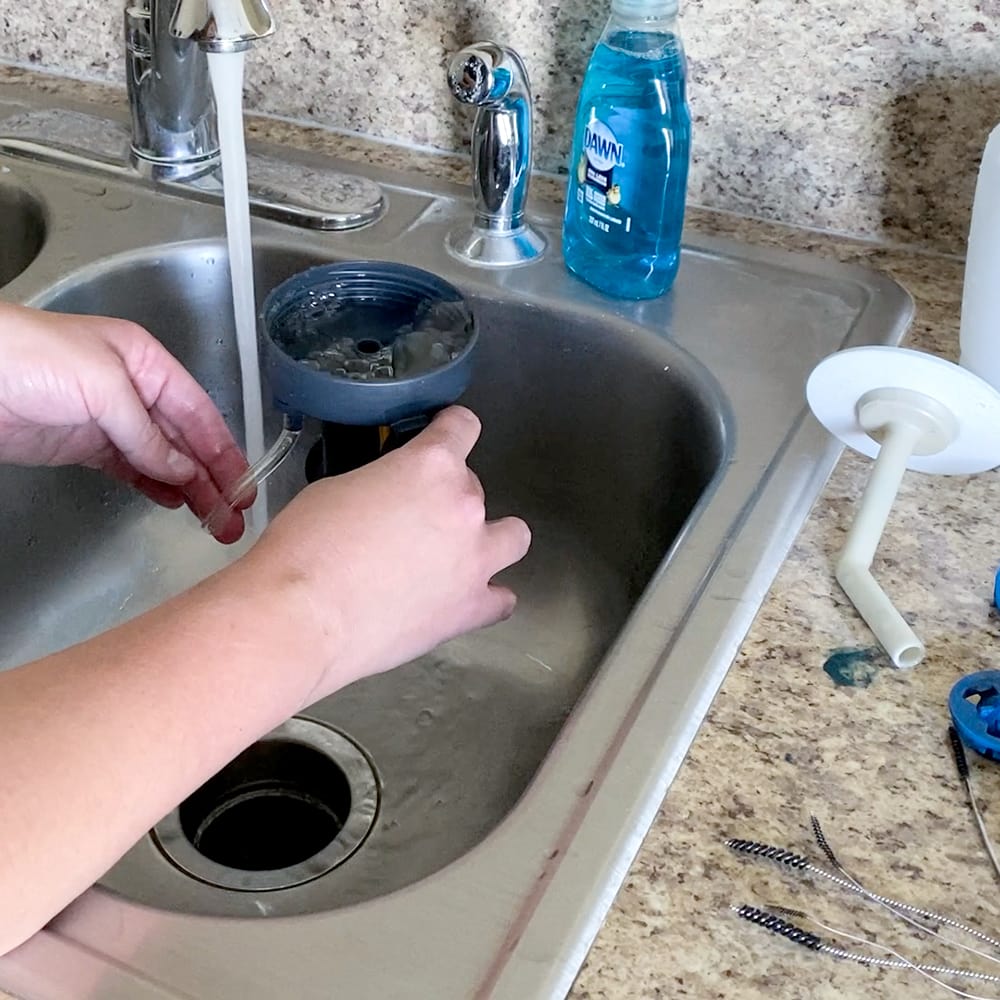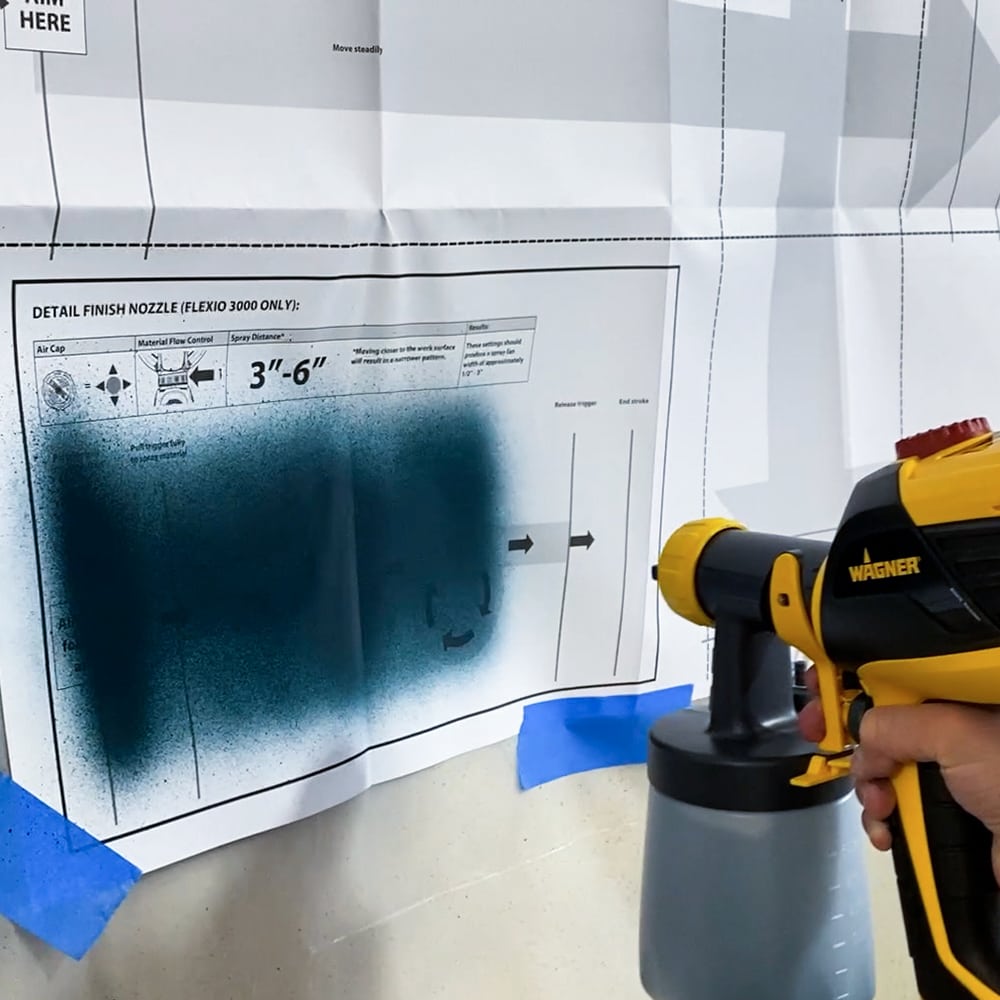Wagner Paint Sprayer Troubleshooting
Trying to use a Wagner paint sprayer but you’re running into problems? Read on for all your Wagner Paint Sprayer troubleshooting needs! Learning how to use a paint sprayer on furniture can be a daunting task, but it doesn’t have to be! With the right tools and techniques, you can create beautiful, professional-looking pieces of furniture in no time.
However, there are some common pitfalls that many people experience when painting with a paint sprayer. In this blog post, we’ll go through the common problems that arise when using a paint sprayer and how to fix them quickly and easily.

Painting furniture with a paint sprayer is a great way to create professional-looking results quickly and easily. However, there can be some challenges when trying to use a Wagner Paint Sprayer for the first time.
From clogged nozzles to rough textures, it’s important to understand the common problems that arise when using this type of tool so you can get the best results possible.
Let’s dive into the common issues related to using the best Wagner paint sprayers for furniture and how you can fix them in order to create beautiful finishes every time!
As an Amazon Associate, I earn from qualifying purchases. I also may earn from other qualifying purchases with other companies or get free product to review and use. All opinions are my own.
Paint not coming out
If the nozzle of your sprayer is clogged, it can be due to a few different things. The most likely cause is that you’re using paint that’s too thick or has tiny specks of debris in it.
To fix this, try using a filter or sifter to strain out any debris before pouring it into the paint container. You can also try thinning out your paint with a bit of water to make it easier to spray. (Read the instructions on the paint container to make sure it can be thinned out.)
Here are some common reasons why paint is not coming out.
- The paint container isn’t attached tightly.
- Your paint is too thick.
- The paint has tiny little specks of debris that is clogging the sprayer.
- Your paint sprayer wasn’t cleaned out good enough.
- If you have a pressure tube on your sprayer, your pressure tube may be blocked.
The paint container isn’t attached tightly.
Check to make sure your container is completely screwed on or sealed tightly. Bottom fed HVLP paint sprayers rely on pressure building up in the paint container for the paint to be able to spray out. If the container is not screwed on correctly the paint will not come out.
Your paint is too thick.
You can test to see if your paint is causing the problems. Dump the paint out of the container and fill it up with water instead. (If you have a separate container for your paint sprayer, I would use the separate container to test it out.)
Can you easily spray the water out of the paint sprayer?
If so, your paint might be too thick, especially if you are using a cheaper sprayer like the Wagner Double Duty sprayer.
If your paint is too thick, thin it out a little bit more with this tutorial on how to thin paint for your paint sprayer. (Read the instructions on the paint container to make sure it can be thinned out.)

For best results, clean the sprayer out before using it again. Here is how to clean a Wagner paint sprayer.
Note, the Wagner FLEXiO sprayers can spray thick paint, but the Wagner Double Duty cannot spray thick paint. Watch our best paint sprayer for furniture comparison YouTube video of my paint sprayers to see the difference.
Check out my honest Wagner 3500 Paint Sprayer Review here to learn more about the features, and pros and cons of this sprayer. Here’s my guide on how to use Wagner FLEXiO 3500.
Here’s my Wagner Flexio 5000 Paint Sprayer Review.
Your paint has debris in it.
Another option is that your paint has debris in it that is clogging your paint sprayer. Even the tiniest piece of dried paint or random thing in your paint can clog these sprayers when combined with paint.
Usually, when this happens, the paint will spray normal in the beginning, but as time goes on the paint stops coming out.
To make sure your paint doesn’t have any debris in it that is clogging the sprayer, use a paint filter to filter the paint as you pour it into your sprayer. In a pinch, a flour sifter can work as well.

Clean out your sprayer, and then use a paint filter when pouring your paint back into the clean paint sprayer. Also, here is our list of the best paint for spraying furniture to help you know what paints are easier to spray.
Your paint sprayer wasn’t cleaned out good enough.
If the paint still isn’t spraying out of your paint sprayer like it should, then you might have a clog in your paint sprayer.
This typically happens if it wasn’t cleaned out properly after the last use. Perhaps you missed taking something off last time? Or maybe it’s time to give the sprayer a deep cleaning.
Take the sprayer apart completely and use these small cleaning brushes to get into all of the pieces of the tips. Clean the suction tube and make sure to spray warm soapy water through the sprayer (just like you would spray paint with the sprayer) to clean out anything stuck inside.
Visit our how to clean a Wagner FLEXiO sprayer post, for more details on how to clean properly.
You can also check out this guide on how to unclog a paint sprayer to learn more.
If you have a pressure tube on your sprayer, your pressure tube may be blocked.
Another place to check for a clog is in your pressure tube. Not all paint sprayers have this (Wagner FLEXiO sprayers have the pressure tube, but the Wagner Double Duty doesn’t).

The pressure tube is the little clear tube on the outside of the sprayer, that usually goes from the lid to the tip part of the sprayer. If it gets clogged, then there is no way for the container to build pressure, so double check that there isn’t any dried paint in there.
If there is, remove it from one side and use a small cleaning brush to clean it out. For more helpful tips here’s our post on Wagner paint sprayer tips!
Bumps and Texture from Splattering Paint
You may get larger bumps in your sprayed paint. These are usually from the paint being too thick.
Try thinning the paint out a little bit more if you can thin it out more.
Before you spray another coat of paint though, you will want to sand all of those bumps down smooth with 220 grit sandpaper, or you will see them in the next coat of paint.
This is why it’s best to test the spray out on some plastic, cardboard, or wood before spraying your furniture to make sure that you like how the paint will spray out onto your furniture.

For more information on using your paint sprayer, here is how to use a Wagner Double Duty paint sprayer, and here is how to use the Wagner FLEXiO Sprayer.
Paint or Topcoat Feels Rough
There are a few things that can cause your paint or poly to feel rough, even though it doesn’t show any texture.
The roughness can be caused by it drying too fast. So, if you’re working outside, do not paint in the full sun. Instead, paint in the shade, and when it’s not the hottest part of the day.
The roughness can also be caused by the overspray in the air settling back down onto your furniture while the paint is drying. This is one big reason why painters have big exhaust fans in their workshops. The exhaust fan sucks all of the overspray in the air out of the room.
If you don’t have an exhaust fan, you can still make it work! Just paint in an open area that has plenty of ventilation. You can also set a box fan or two near your door or window to help push the overspray out of the room.
I made a homemade filter that works amazingly well in my spray booth. I taped together 4 2″x20″x20″ filters to create a box. Then I set my box fan on the top of it, pushing the air up towards the ceiling.
When I turn on the fan, it sucks the air into the filters and pushes it up towards the ceiling. This sucks the overspray into the filters and pushes out clean air and keeps the area I’m working in a lot cleaner with less overspray in the air to ruin my work.

Drips in the Paint
Drips can happen when you are painting furniture with any type of tool. If your paint is too thin, the paint will drip easier than if it is thicker.
Make sure to use a back-and-forth motion when spraying, and hold the sprayer at around 6″ away from the surface you’re spraying. Adjust the fluid output setting on the sprayer to a setting that is spraying out an amount of paint that you are comfortable with, but an amount that isn’t a lot.
You want to be able to spray a thin coat of paint while slowly moving across your furniture. You don’t have to move painfully slow though. A speed somewhere right in the middle that feels comfortable and not rushed is about right.
After you spray, stick around for a few minutes and then check everywhere on your furniture for any signs of drips. If you see some drips forming, use a paint brush to brush off the excess paint while it is still wet.

Yes, this will leave some brush marks in the paint, but they can easily be sanded smooth, compared to sanding a large drip after it is dry.
Learn more about how to fix spray paint drips here.
By understanding and troubleshooting these common problems with Wagner Paint Sprayers, you’ll be able to get the best results possible when painting furniture.
Remember to keep your workspace cool and well-ventilated, always filter the paint before putting it in your sprayer, and adjust the settings for better control. With a bit of practice, you’ll be creating beautiful pieces of furniture in no time!
more Paint Sprayer Tips
- Wagner VS HomeRight Paint Sprayers
- Honest Wagner Double Duty Paint Sprayer Review
- HomeRight Super Finish Max Paint Sprayer Review
- Can You Use Paint in a Wagner Stain Sprayer
- Homeright Finish Max VS Super Finish Max
Follow us on YouTube to get more tips for painting furniture.
Or share your project with us on our Facebook Group and be part of our community. See you there!
